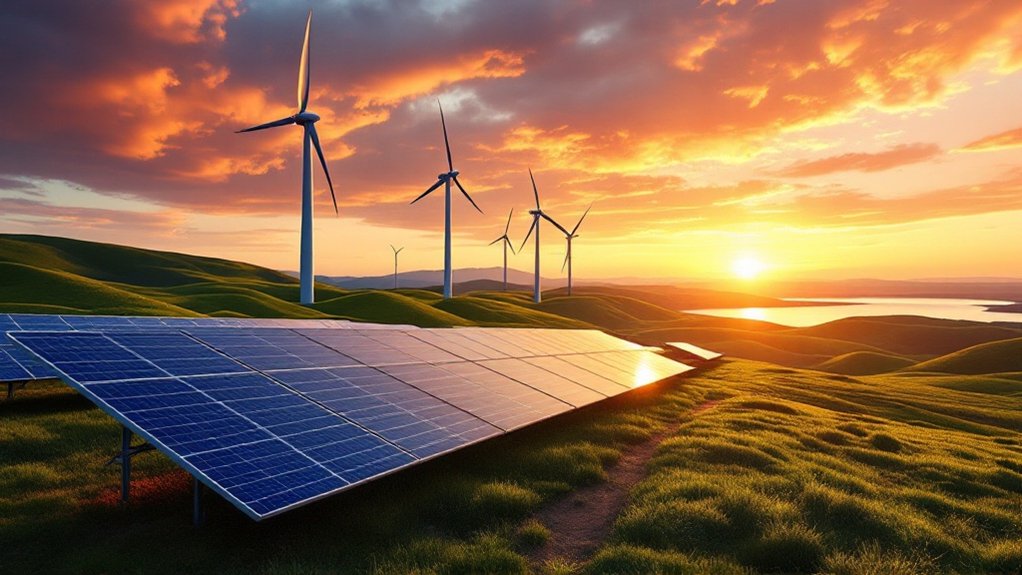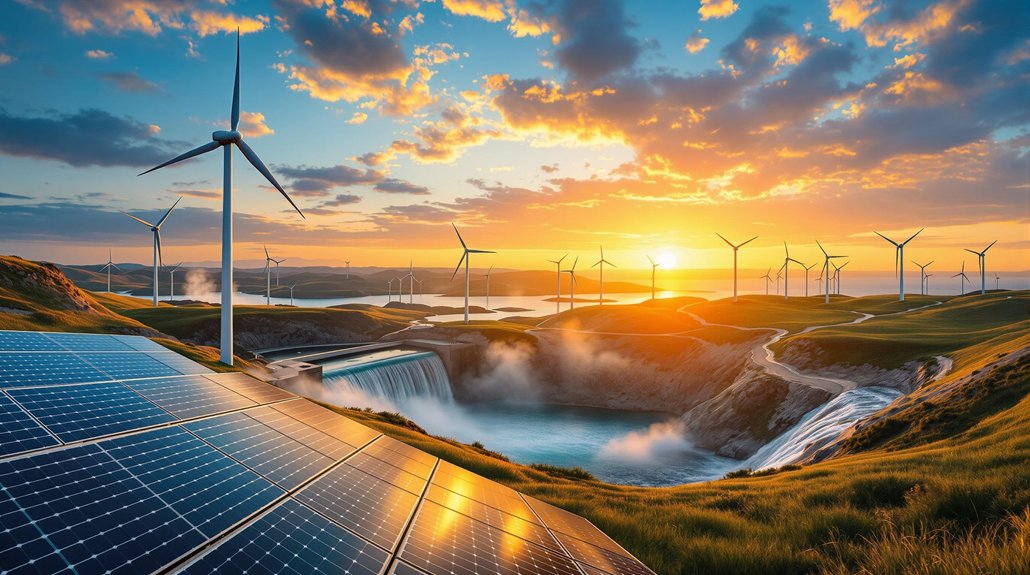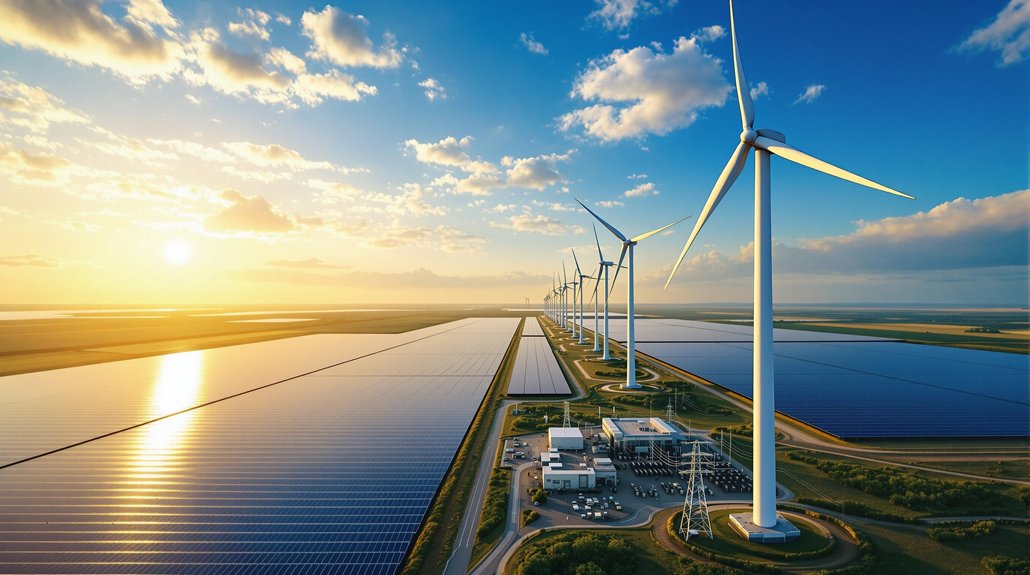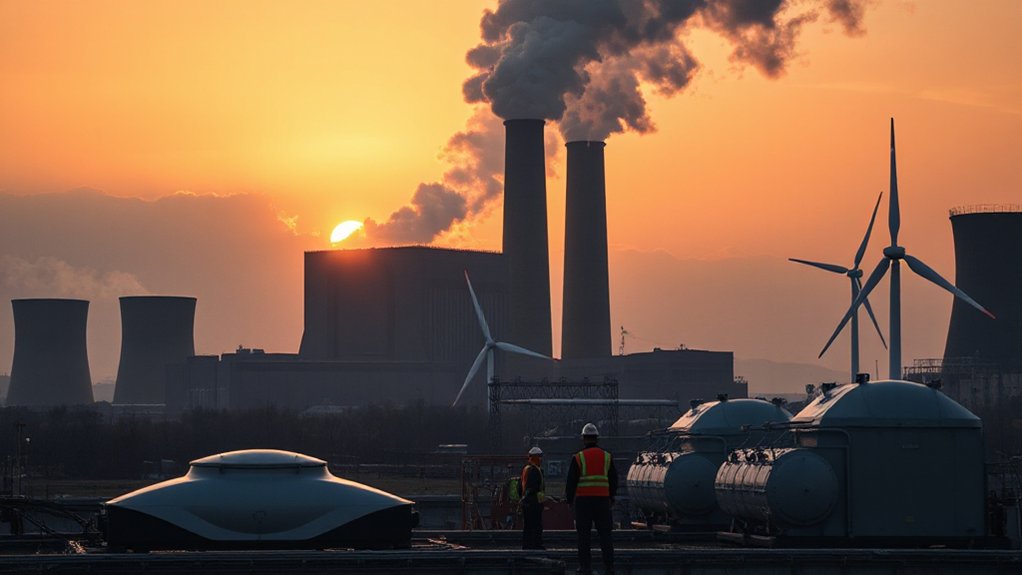Renewable energy sources are transforming our power systems worldwide. Solar panels now provide over 3% of global electricity, while wind turbines contribute more than 6%. Hydropower remains the largest renewable source at 15.3% of worldwide electricity. Geothermal and biomass energies offer additional sustainable options. Newer technologies like ocean energy and green hydrogen are rapidly developing. The expanding renewable landscape continues to shape our energy future.

Nearly all countries worldwide are now turning to renewable energy sources as a key solution to combat climate change. These clean energy technologies have seen remarkable growth in recent years, offering alternatives to fossil fuels that don’t harm our planet.
Solar energy has become more affordable and widespread. Photovoltaic panels turn sunlight directly into electricity, while concentrated solar systems use mirrors to create heat. Global solar capacity reached 843 GW in 2022, and costs have fallen by 82% since 2010. Today, solar provides over 3% of the world’s electricity.
Solar power’s remarkable journey: costs down 82% since 2010, now generating 3% of global electricity.
Wind power continues to expand both on land and at sea. Wind turbines capture moving air to generate electricity, with global capacity exceeding 837 GW in 2021. Wind now produces more than 6% of global electricity. Offshore wind farms are especially effective because ocean winds are more consistent.
Hydropower remains the largest renewable electricity source globally, providing 15.3% of worldwide electricity in 2021. Dams and water flow systems turn moving water into power, with global capacity at 1,360 GW. Unlike some renewables, hydropower can provide steady, reliable energy. Hydropower currently accounts for 28.7% of U.S. renewable electricity generation, making it a crucial component of America’s clean energy portfolio.
Geothermal energy taps into Earth’s natural heat. With 16 GW of capacity worldwide, it offers consistent power but is limited to certain regions with suitable underground conditions. Over 88 countries use geothermal directly for heating.
Biomass energy converts organic materials like wood, crops and waste into useful power. It makes up about 9% of global primary energy and can be activated when needed.
Ocean energy systems capture power from tides, waves, and temperature differences in seas. Though still developing with just 531 MW of global capacity, ocean energy has enormous potential for 24/7 power generation.
Green hydrogen, produced using renewable electricity, is emerging as a way to store and transport clean energy. Global capacity reached 458 MW in 2021, with costs expected to drop 30% by 2030 as the industry grows. These renewable technologies are essential as non-renewable resources are projected to deplete by 2060, necessitating a complete transition to sustainable energy sources.
Frequently Asked Questions
What Are the Financial Incentives for Adopting Renewable Energy?
Financial incentives for renewable energy adoption include federal tax credits covering 30% of installation costs and production-based credits for electricity generation.
Many states offer property tax exemptions and sales tax reductions.
Utilities provide net metering, allowing customers to sell excess energy back to the grid.
Corporations can benefit from power purchase agreements and accelerated depreciation.
Local governments and utilities often add rebates and performance-based incentives.
How Reliable Are Renewable Energy Sources During Extreme Weather?
Renewable energy sources show varied reliability during extreme weather.
Solar panels operate at reduced capacity on cloudy days and can be affected by snow coverage.
Wind turbines enter “survival mode” during high winds but function well with cold weather packages.
Hydropower remains stable but faces challenges from droughts.
Smart grids with AI forecasting and battery storage systems help maintain power during severe weather events.
Geographic diversity of installations improves overall system resilience.
Can Renewable Energy Completely Replace Fossil Fuels?
Experts say renewable energy can theoretically replace fossil fuels completely, but significant challenges remain.
Current renewable sources provide just 11.4% of global energy, while fossil fuels supply 84.3%. A full changeover requires 6-8 times more renewable capacity by 2050.
Major hurdles include energy storage for intermittent sources, land requirements for installations, and adapting transportation infrastructure.
A successful shift needs multiple renewable technologies, international cooperation, and likely lifestyle adjustments in developed nations.
What Job Opportunities Exist in the Renewable Energy Sector?
The renewable energy sector offers diverse job opportunities.
Solar panel installers, wind turbine technicians, and biofuel specialists are in high demand.
Engineering positions require degrees, while technical roles need certifications.
The industry employs 13.7 million people globally and is growing twice as fast as the overall job market.
These jobs typically pay 25% above median wages and exist across all 50 states.
Veterans and Hispanic workers are finding significant employment in this field.
How Do Different Countries Compare in Renewable Energy Implementation?
Countries vary widely in renewable energy implementation.
China leads in total capacity with 1,453 GW, followed by the United States.
Iceland, Norway, and Costa Rica have the highest percentage of renewable electricity, all above 98%.
The EU has set ambitious targets of 45% renewable energy by 2030.
Denmark and Lithuania show rapid growth rates.
Some nations focus on specific technologies, like Kenya with geothermal and Japan with floating offshore wind.









